Your Razor Lasts Way Longer Than You Think. Here’s How.
I learned the barber trade from an old-school craftsman, a guy who believed every tool deserved respect. He taught me that a sharp, well-maintained blade wasn’t a luxury; it was the foundation of the entire craft. A truly sharp blade is kinder to the skin, delivering a clean cut and a far better result. And you know what? That lesson applies just as much to the modern razors we all use at home, whether you’re shaving your face, legs, or anything else.
In this article
So many of us think razors are just disposable. We accept the pulling, the irritation, and the crazy high cost of replacement cartridges as part of the deal. But honestly, a lot of that is totally preventable. It comes from tiny habits that wreck the blade’s delicate edge. With the right care, you can make your blades last so much longer.
And let’s be real, this isn’t just about being cheap—it’s about getting a superior shave and saving some serious cash. Think about it: a standard pack of brand-name cartridges can run you $25 or more. If you only get 3 or 4 shaves out of each one, you’re buying new packs constantly. But what if you could easily get 10, 12, or even 15 shaves? You’d be cutting your annual razor bill by more than half. That’s a hundred bucks back in your pocket, easily.
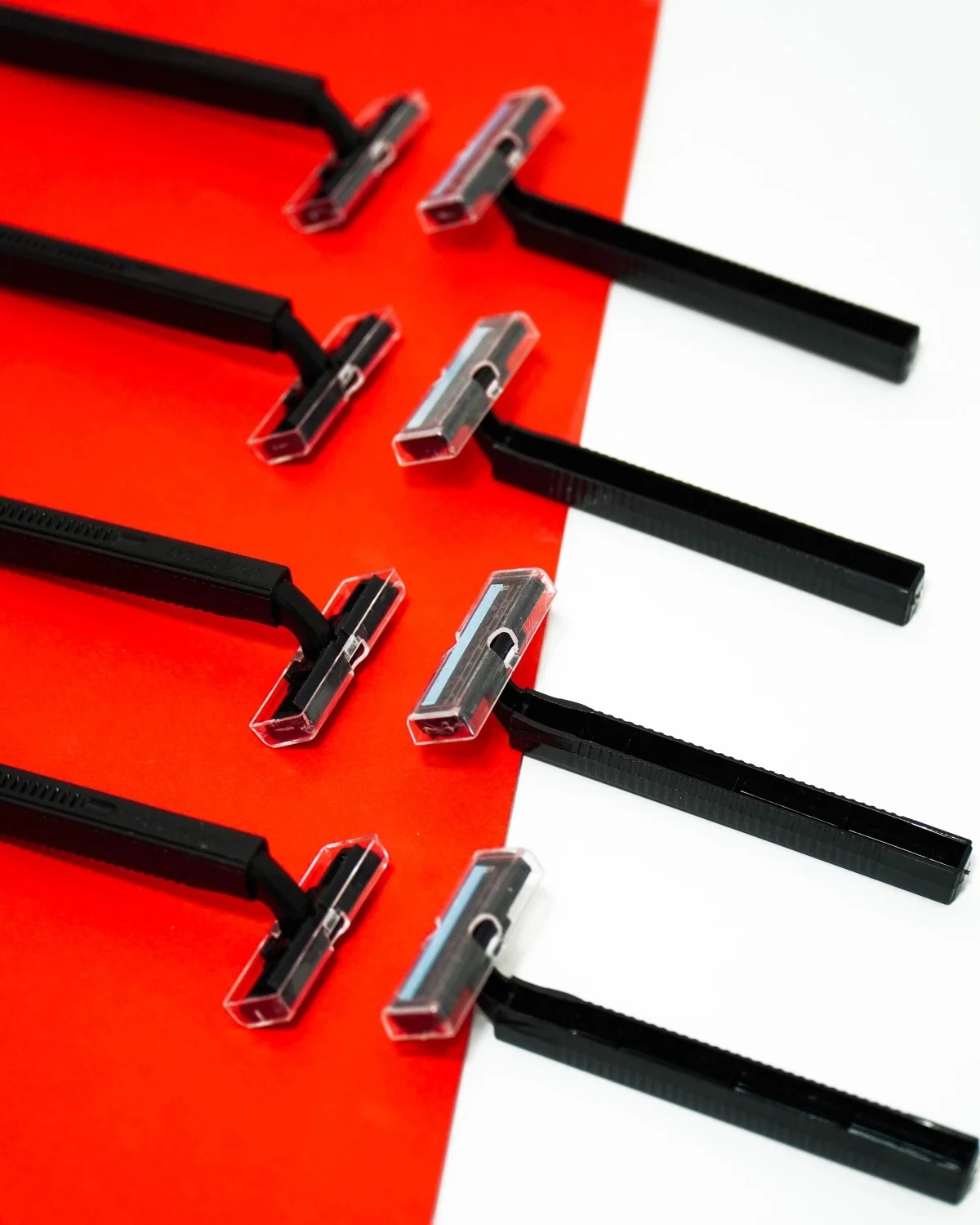
First, Know Your Enemy: What Actually Dulls a Blade?
To protect your razor, you have to understand what you’re fighting. A razor blade seems simple, but its cutting edge is a fragile piece of engineering. Understanding the science is the first step.
Most modern blades are made from stainless steel, which is great, but it’s not invincible. The pros add super-thin coatings of things like platinum or chromium to make the edge more durable. They also add polymer coatings, kind of like Teflon, to help it glide. The actual cutting edge is ridiculously thin—we’re talking just a few hundred atoms thick. That’s why it can slice through tough hair, but it’s also why it’s so easy to damage.
Two things ruin a blade: corrosion and physical damage.
- Corrosion (a.k.a. Rust): This is the chemical attack. When water and oxygen hang out on the steel edge, a reaction called oxidation begins. Even on stainless steel, this happens on a microscopic level, creating tiny pits and jagged spots that snag hair instead of cutting it cleanly.
- Mechanical Wear (Micro-Chipping): This is the physical beatdown. Cutting hair, scraping against skin, and plowing through shave cream all cause the super-fine edge to bend, roll over, or even get tiny chips. Think of it like a piece of tin foil—it doesn’t take much to deform it.
Heads up for those with hard water: If your faucets and showerhead get those white, crusty spots, you have hard water. Those minerals (calcium and magnesium) are blade killers. They leave deposits that trap moisture right against the steel, putting the corrosion process on hyperdrive. For you, the cleaning and drying steps we’re about to cover aren’t optional; they’re essential.
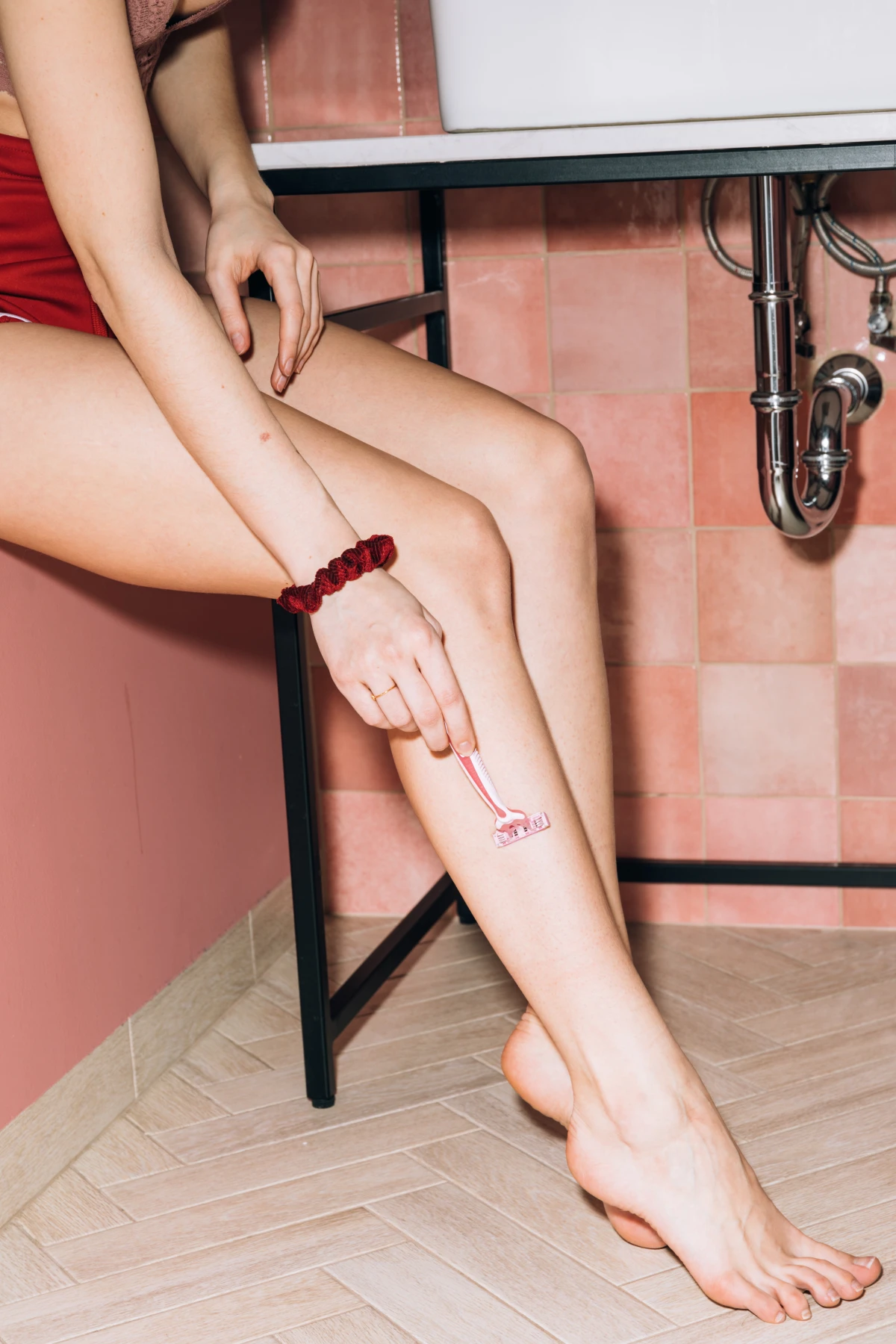
The Foundation: Prepping for the Perfect Shave
You can’t get a long-lasting blade without a good prep routine. Rushing this is probably the biggest mistake people make. Good prep makes hair easier to cut, which means less force on the blade and less wear and tear.
Trim First, Shave Second
If you’re dealing with more than a few days of growth, don’t just go straight for the razor. Long hairs clog the cartridge and put a ton of stress on the blades. Grab an electric trimmer or even scissors and cut everything down to short stubble first. This one step prevents a world of tugging.
The Magic of Warm Water
There’s a reason barbers use hot towels. Heat and moisture soften the keratin in your hair, making it much easier to slice through. The best time to shave is right after a warm shower. If you can’t, just splash the area with warm water for a solid minute. It really makes a difference.
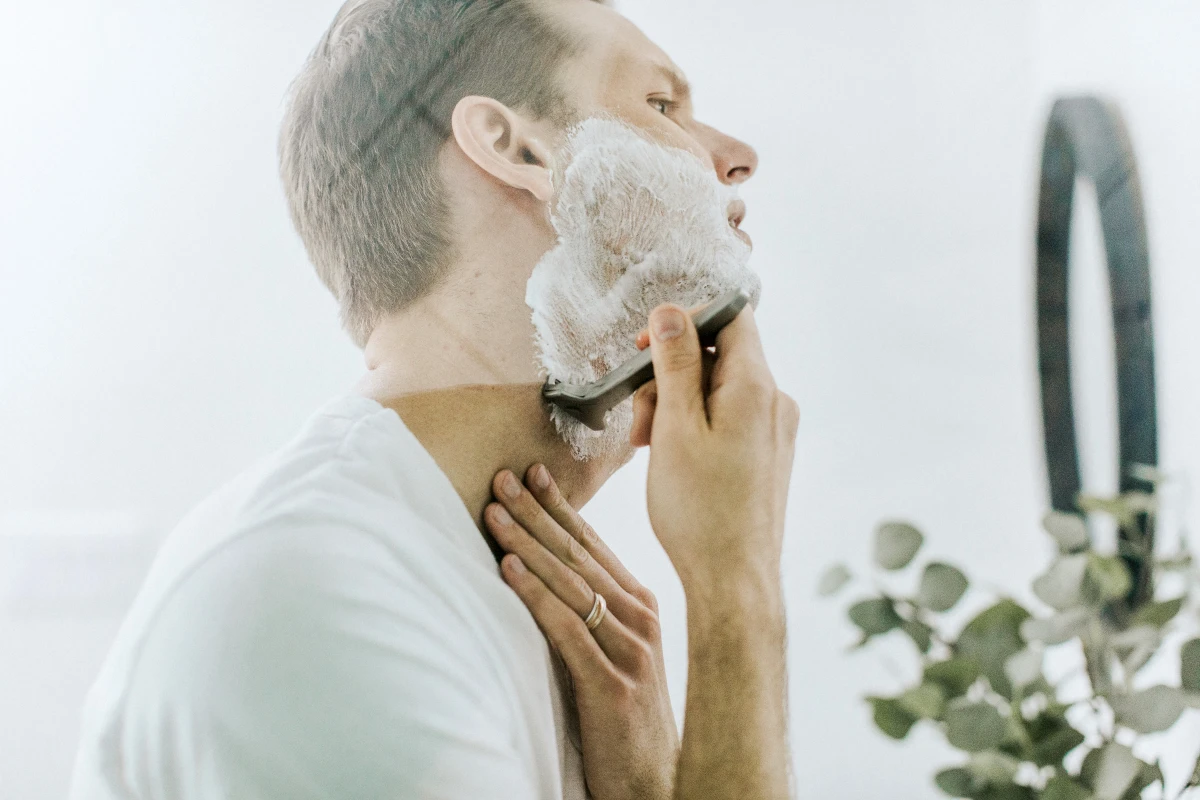
Clear the Path with Exfoliation
Your razor has to get through a layer of dead skin cells, oil, and dirt before it even reaches the hair. This gunk acts like sandpaper, grinding down the blade’s edge. A gentle exfoliation with a washcloth or a mild face/body scrub clears the runway, ensuring the blade makes clean contact with the hair. It’s a game-changer for reducing razor burn.
Lather Up the Right Way
The product you use here is critical. That cheap canned foam is mostly air and offers terrible lubrication. Shave gels are better, but for the best protection, invest in a quality shaving cream or a traditional shave soap. They create a dense, slick lather that protects both your skin and the blade. Apply it to wet skin and let it sit for a minute to really soften the hairs.
The Post-Shave Ritual: This Is Where Most Razors Die
Okay, listen up, because what you do after the last stroke is the most important part of this whole process. Most blade damage happens in the hours after you shave, when moisture is left to do its dirty work.
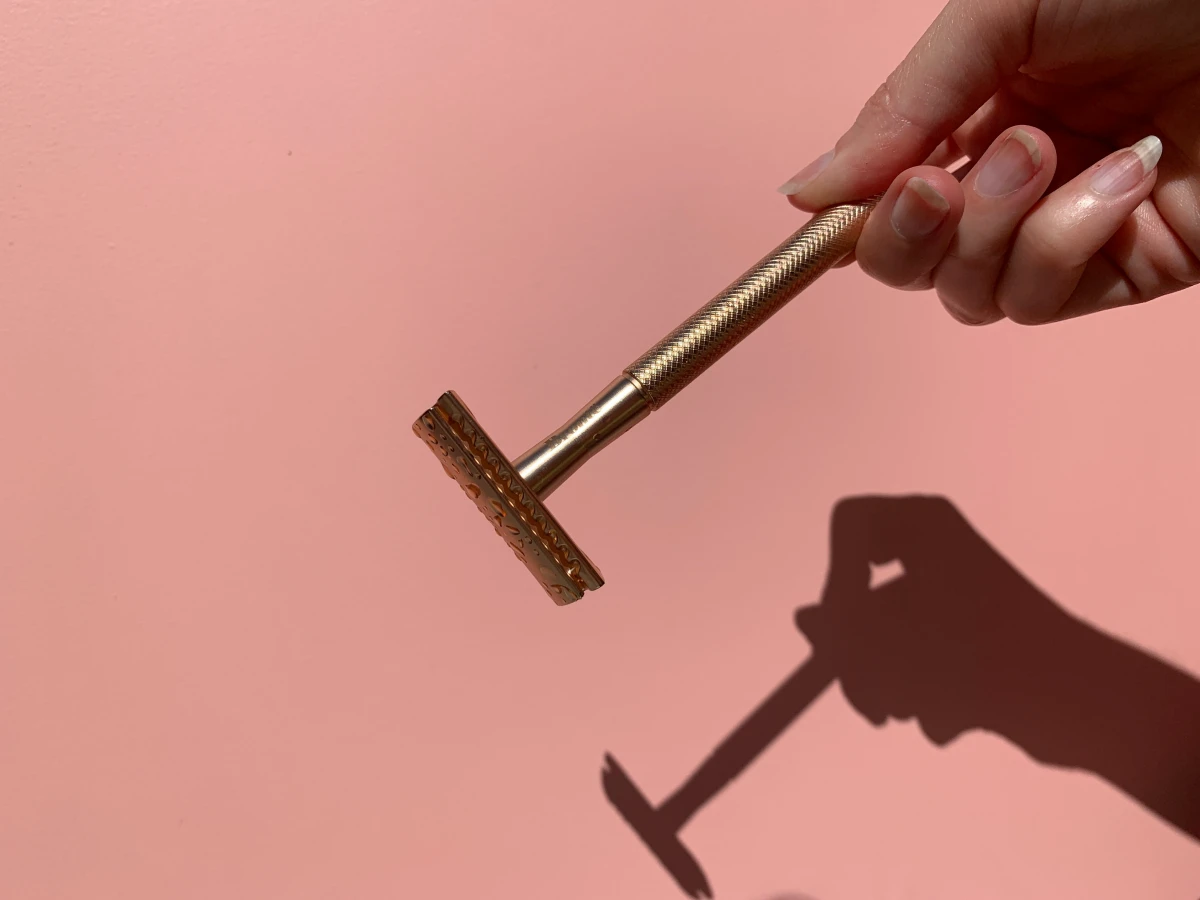
Your post-shave ritual can be broken down into three dead-simple steps: a thorough Rinse, a firm Shake, and a gentle Blot.
First, rinse the blade with hot, running water. And I mean really rinse it. A quick splash isn’t enough. Direct the stream from the back of the cartridge to push all the hair and gunk out. Keep going for about 15-20 seconds until it looks perfectly clean.
Next, give the razor a few firm shakes over the sink to force out most of the trapped water.
Finally—and this is key—gently blot the razor cartridge on a dry towel. Do not wipe it! Wiping, even with a soft towel, can catch that microscopic edge and ruin it. A gentle press is all it takes to wick away the last bit of moisture.
Pro-Level Move: The Alcohol Dip
Want to take it to the next level? This is the secret. After blotting, dip the razor head in a little bit of high-concentration isopropyl (rubbing) alcohol. A 70% to 91% solution works perfectly. You don’t need a big bowl; an old jar lid or even a shot glass with just enough alcohol to cover the blades is perfect. You can get a huge bottle for a couple of bucks at any pharmacy. Swish it for a few seconds. The alcohol displaces any hidden water and evaporates in moments, leaving the blade perfectly dry and disinfected. This step basically stops corrosion cold.

Storage Smarts: A Safe Home for Your Razor
I cannot stress this enough: do not store your razor in the shower. The warm, humid air is a graveyard for blades. It’s the perfect environment for rust and bacteria to thrive. I’ll admit, I got lazy once and left a blade in a shower caddy… it had tiny orange rust spots by the next day. Never again.
A razor stored in a damp caddy can also become a breeding ground for bacteria, which can lead to folliculitis—those nasty red, itchy bumps. Sometimes, what people think is just razor burn is actually a low-grade infection from a dirty blade.
The best place for your razor is somewhere dry, like a medicine cabinet or on a razor stand on your counter. A stand is great because it allows air to circulate. And always use that little plastic cover it came with when traveling to protect the blades from getting banged up.
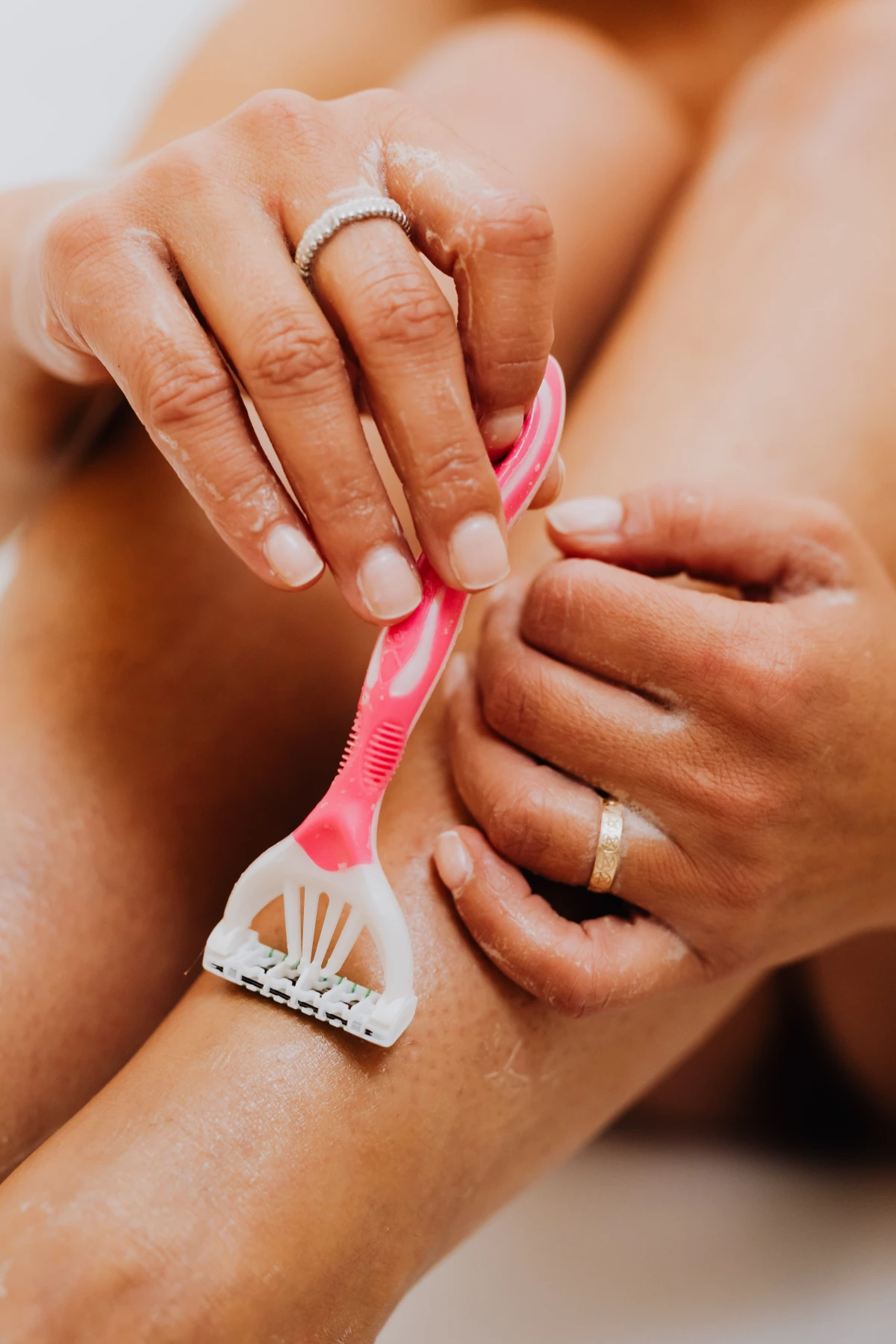
The Denim Trick: Realigning Your Blade’s Edge
Even with perfect care, shaving will slowly cause the blade’s edge to bend or roll over. Stropping is a classic technique for realigning that edge. It doesn’t sharpen by removing metal; it just straightens what’s already there. You can do this at home with a pair of blue jeans.
Here’s how. Lay a pair of old denim jeans flat. Push the razor away from you along the fabric about 15-20 times. The critical part is to lead with the back of the cartridge, not the cutting edge. Think of it like you’re trying to spread cold butter with the back of a knife—you’re using the dull side to polish the sharp one. Always push away, then lift and return to the start. Never drag it back and forth. You’ll be surprised at how much smoother your next shave feels.
Knowing When to Say Goodbye
No blade lasts forever. Eventually, it’s time to call it quits. Using a dull blade is what causes most nicks, cuts, and irritation. Your skin will tell you when it’s time.
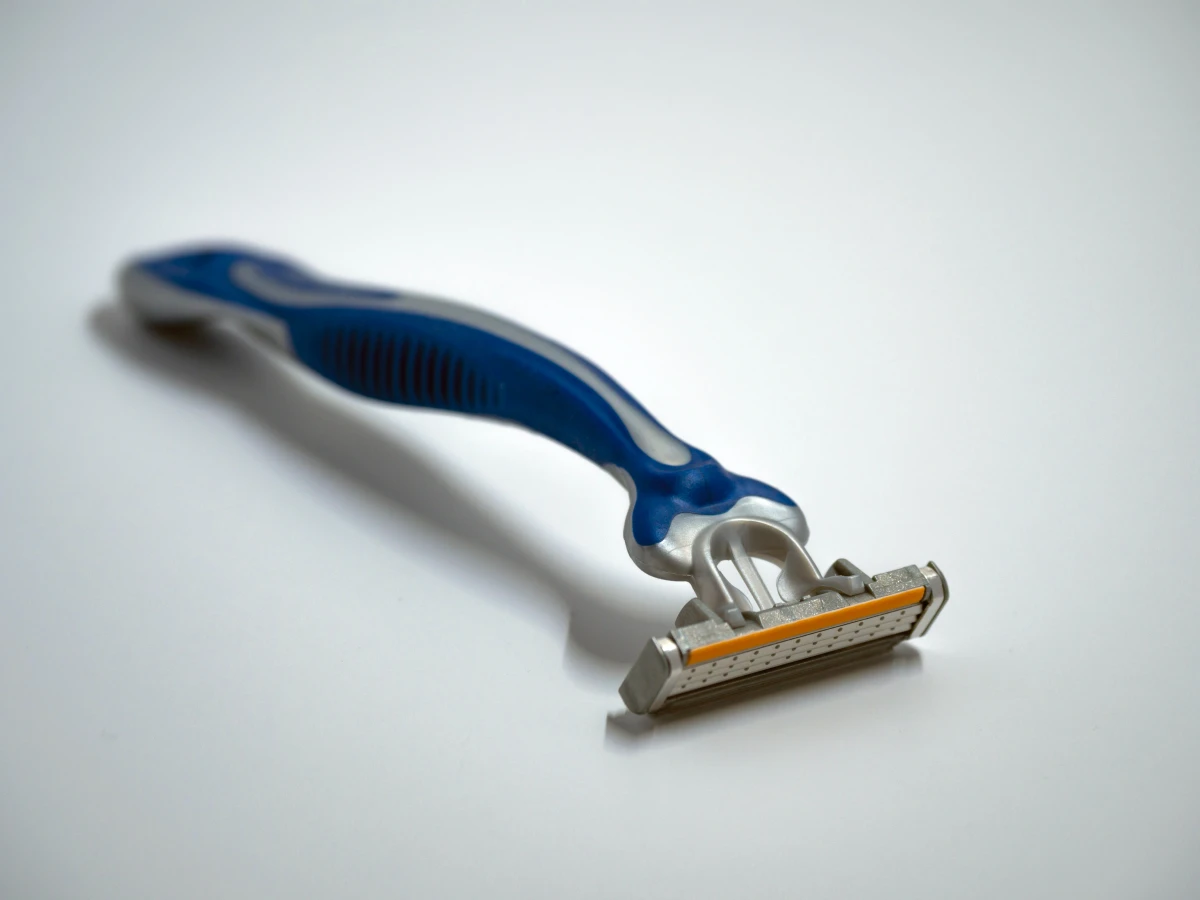
- Tugging and Pulling: This is the #1 sign. A sharp blade glides. A dull one yanks.
- More Irritation: If you’re suddenly getting more redness or razor burn, your blade is likely the culprit.
- Multiple Passes: Finding yourself going over the same spot again and again? The blade isn’t cutting efficiently anymore.
- Visible Damage: If you see any rust spots or nicks on the blades, toss it immediately. No questions asked.
The goal is to use a blade for as long as it provides a comfortable, effective shave. The moment it stops, it’s time for a fresh one. By following these steps, you’re not just saving money; you’re adopting a craftsman’s mindset. It’s about taking a few extra moments to value your tools, and your skin will absolutely thank you for it.
Inspirational Gallery
The Final Rinse Matters: Always finish by rinsing your blade with the hottest water your tap can produce. The heat helps to dislodge stubborn microscopic debris and skin oils more effectively than cold water. Crucially, the residual heat on the metal also helps water evaporate much faster, drastically reducing the time the blade spends wet and vulnerable to corrosion.
An estimated 2 billion razors and cartridges are tossed out in the U.S. each year.
This mountain of waste is a real environmental concern. But you can make a difference. Programs like Gillette’s partnership with TerraCycle allow you to mail in all brands of blades and razors for free to be recycled into new products, from park benches to shipping pallets. It’s a simple step that gives your shaving habit a greener edge.
That habit of tapping your razor against the sink to knock out hair? It’s one of the fastest ways to destroy the blade’s edge. The impact, even if it seems light, creates microscopic nicks and dents along the ultra-thin cutting surface. This micro-damage is what causes the pulling and irritation on your next shave. A vigorous swish in water is all you need.
Looking for a better way to store your razor than the damp shower caddy?
Create a simple razor ‘dry dock.’ Find a small, ventilated container (an old pill bottle with holes drilled in the lid works well) and drop in a silica gel packet you’ve saved from a shoebox or electronics packaging. After rinsing and shaking your razor, store it in the container. The desiccant will absorb any remaining moisture, keeping rust at bay.
Shaving Gel: Often clear and packed with lubricants like glycerin and silicone, gels create an exceptionally slick barrier that offers maximum protection for the blade’s edge against the skin. They’re great for seeing exactly where you’re shaving.
Shaving Cream: Classic creams, when lathered with a brush, lift hairs up and away from the skin for a traditional, close shave. However, the thick lather can sometimes clog multi-blade cartridges more easily if not rinsed thoroughly.
For pure blade preservation, a high-quality gel often has a slight advantage.
- A smoother, more comfortable glide.
- A visibly closer shave with fewer passes.
- Significantly less chance of razor burn and nicks.
The secret? Shaving with the grain on your first pass. Going against the grain immediately puts maximum stress on the blade and your skin. By following the direction of hair growth first, you shorten the hair with minimal resistance, preserving the blade for a final, clean-up pass against the grain if needed.
The single blade of a safety razor doesn’t forgive bad technique, but it rewards good technique with a perfect shave. It teaches you to listen to the blade.
If you’re serious about extending blade life, consider a stropping tool designed for cartridges. Products like the BladeBuddy or RazorPit use a soft, textured silicone pad. Before each shave, you push the razor forward along the pad a few times (with a bit of shaving cream as a lubricant). This process doesn’t technically ‘sharpen’ the steel, but it cleans and realigns the microscopic fin of the blade’s edge, polishing away corrosion and imperfections for a consistently smoother feel.
The ultimate move for both your wallet and your skin might be switching to a traditional double-edge (DE) safety razor. While a quality handle from a brand like Merkur, Edwin Jagger, or Parker is an initial investment of $30-$50, the high-quality stainless steel replacement blades cost as little as 10 to 20 cents each. You get a superior shave while cutting your long-term costs by up to 90% compared to cartridges.
There’s a quiet confidence that comes from a perfectly sharp blade. It glides, it doesn’t scrape. It’s the difference between a mindful morning ritual and a hurried, painful chore. That silent, effortless shearing sound is the hallmark of a blade in its prime, treating your skin with the respect it deserves.










